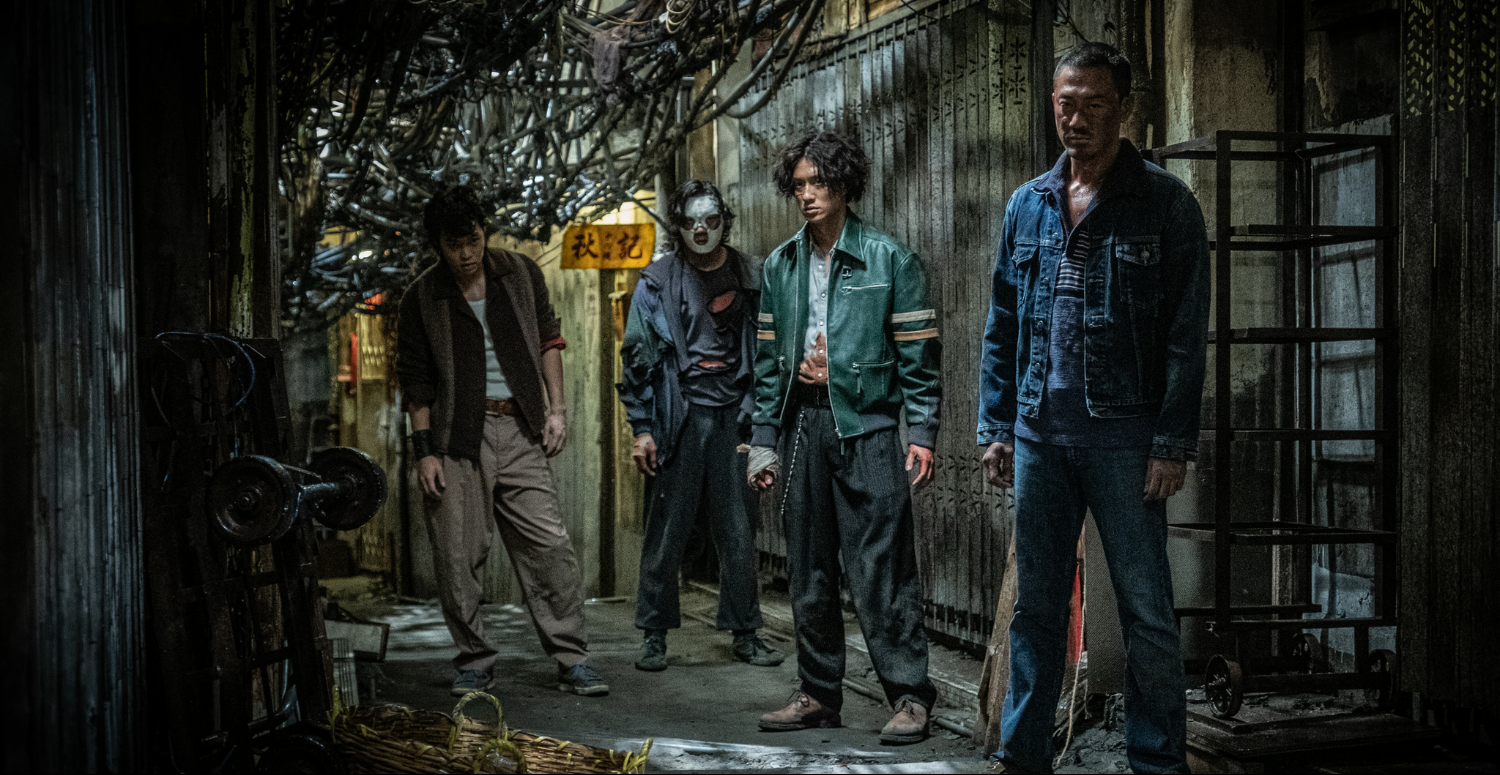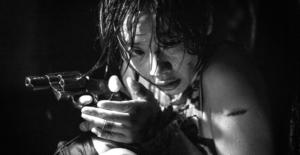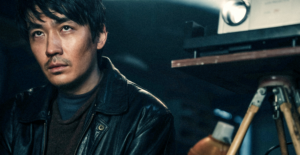City of Darkness
九龍城寨之圍城
Corbeau d’Or – Bruxelles
Prix du Public – Neuchâtel
2024

FR EN
Dans les années 1980, à Hong-Kong seule l’enclave de Kowloon résiste encore et toujours au contrôle britannique. C’est une citadelle d’immeubles entassés les uns sur les autres où les ruelles sont des couloirs, une véritable ville dans la ville, progressivement devenue zone de non-droit dans laquelle ni les représentants britanniques ni les autorités chinoises – pas plus que la lumière du jour – ne pouvaient pénétrer ! C’est une cité livrée à elle-même où l’on vit les uns sur les autres, un gigantesque bidonville vertical, où tout le monde se file un coup de main pour survivre. Cyclone en est le chef mais son temps sera bientôt compté et c’est pourquoi ses rivaux s’activent. Par ailleurs avec la cessation de la cité par les autorités britanniques à la Chine, la citadelle est elle-même menacée de destruction.
Voici donc le contexte de ce film d’arts martiaux chinois qui met en scène un immigré clandestin qui se réfugie dans la célèbre citadelle de Kowloon suite à un différend avec une des triades, en pleine crise des réfugiés à Hong-Kong. C’est le nouveau film de Soi Cheang, le fils spirituel de l’âge d’or du cinéma d’action hongkongais des années 1980-1990, et l’un des derniers vestiges d’une industrie cinématographique indépendante, l’un des derniers films ‘hongkongais’ à proprement parler. Le réalisateur de « Limbo » rend ici hommage non seulement à ses maîtres avec ce film de gangsters généreux en combats spectaculaires, mais aussi au Hong-Kong d’antan et en particulier à cette fameuse citadelle démolie en 1993 que le film reproduit de manière époustouflante pour un budget très raisonnable ($38M).
« City of Darkness » nous plonge ainsi dans ce lieu fascinant, tel un personnage à part entière de l’intrigue, grâce à un magnifique travail de décors de Kenneth Mak où la caméra circule entre les dalles de béton, les fouillis de câbles et les escaliers brinquebalants dans des scènes d’action qui intègrent cette topographie particulière. On retrouve l’univers graphique crépusculaire de son réalisateur dans des chorégraphies variées et inventives entre le réalisme et la poésie du cinéma martial chinois.
La photographie embellit véritablement les scènes d’action et donne une vraie atmosphère à l’ensemble quitte à s’approcher du ridicule ou de l’excessif par moments mais toujours en restant cohérent avec le ton du film. Si derrière sa folle énergie, le film propose un sous-texte politique anticolonial et de lutte des classes, « City of Darkness » reste avant tout un film d’action qui ne dépasse pas vraiment son cadre mais symbolise bel et bien la fin d’une époque.
Cependant si les chorégraphies sont impressionnantes et l’intrigue captivante, le scénario risque lui de perdre son spectateur d’une part en introduisant des éléments fantastiques qui surgissent sans préavis, et d’autre part – et surtout – en étirant beaucoup trop son récit. Pour être encore plus précis, le film étire en fait beaucoup trop sa phase de résolution avec pas moins de trois troisièmes actes dans un film qui ne dure que 2h, certes, mais qui par conséquent paraît malheureusement bien plus long à force de répéter des séquences de conclusion. Une inutilité (peut-être due à l’adaptation du manhua) qui change néanmoins assez profondément la perception d’un tel film sur sa fin !
In Hong Kong in the 1980s, only the enclave of Kowloon continues to resist British control. This is a citadel of buildings piled one on top of the other, where alleyways are corridors, a real city within the city, gradually becoming a lawless zone into which neither British representatives nor Chinese authorities – or daylight for that matter – could enter! It’s a walled city where people live on top of each other, a gigantic vertical shantytown, where everyone gives each other a hand to survive. Cyclone is its leader, but his time is running out, so his rivals are getting ready to take over. And with the British authorities ceding the city to China, the citadel itself is threatened with destruction.
This is the background to this Chinese martial arts film about an illegal immigrant who takes refuge in the notorious Kowloon citadel following a dispute with one of the triads, in the midst of Hong Kong’s refugee crisis. This is the latest film from Soi Cheang, the spiritual son of the golden age of Hong Kong action cinema in the 1980s-1990s, and one of the last remnants of an independent film industry, one of the last truly ‘Hong Kong’ productions. The director of “Limbo” pays homage not only to his masters with this gangster film packed with spectacular fights, but also to the Hong Kong of yesteryear, and in particular to the famous citadel demolished in 1993, which the film recreates in breathtaking fashion on a very decent budget ($38M).
“City of Darkness” brings us into this fascinating place as a fully-fledged character in the plot, thanks to Kenneth Mak’s outstanding set design, in which the camera moves between concrete slabs, jumbled cables and rickety staircases in action scenes that fully take into account this unique layout. The director’s crepuscular visual universe is again expressed in the diverse, and creative choreographies that combine the realism and poetry of Chinese martial arts cinema.
The cinematography truly enhances the action scenes and lends a real atmosphere to the whole thing, even if it sometimes borders on the ridiculous or over-the-top, always remaining consistent with the film’s tone though. While behind its wild energy lies an anti-colonial and class struggle political subtext, “City of Darkness” remains above all an action film that doesn’t really go beyond its framework, but does indeed symbolize the end of an era.
However, while the choreography is impressive and the plot captivating, the script does run the risk of alienating the viewer, not only by introducing fantasy elements that pop up without warning, but also – and above all – by stretching the story too far. To be even more specific, the film stretches its resolution stage far too much, with no less than three third acts in a film that, while only 2 hours long, unfortunately feels much longer as a result of its repeated conclusion sequences. A futility (perhaps due to the adaptation of the manhua) that nonetheless profoundly affects the way such a film is perceived at the end!

